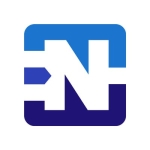What is our primary use case?
It's our primary firewall. It's also our UTM device, so we have multiple security layers enabled on it.
We're using an M270 firewall with version 12.5.
How has it helped my organization?
With WatchGuard, I've got a lot of WebBlocker rules set up which help quite a bit, blocking a lot of suspicious and parked domains. Between WebBlocker, the Botnet Detection, the website reputation filters going, and IPS - which is one that is essential, but nobody really talks about a whole lot; between all those things working together, and even the antivirus, I feel our network is pretty clean. And if there is some suspicious activity, I think I have a better chance of being alerted to it. I've even been able to set up Application Control rules, so that something like Windows Update doesn't deplete too much bandwidth. There are whole bandwidth controls you can set up which aren't necessarily security-related, but they can help make sure that one particular function doesn't take up so much bandwidth that the users are affected. WatchGuard has layered security, but I also have other layers beyond that.
I wouldn't necessarily say it has simplified my job but I am very happy to have it. I'm very glad we went with WatchGuard. I was impressed with WatchGuard for a lot of other reasons like their education and training videos. They do a lot of little security announcements about what's going on with other companies in the industry, so that part has made my job easier. I wouldn't say it's made my job more difficult either. It has definitely made me feel more comfortable about the security here, but I wouldn't say it simplified things. We had a very simple firewall which was almost a small-business router. It had a little firewall screen with four settings on it that really didn't do a whole lot. So, I can't say WatchGuard simplified things for me. It's just we're much more secure and it hasn't overly complicated things.
What is most valuable?
One of my favorite features is the Geolocation service, where you can actually block specific activity or IP addresses registered to certain countries. For example, I don't want any web traffic from Russia or North Korea. I may even lock down certain policies down to "I only want U.S. IP addresses." I find that very useful. That was not a feature that was initially there for us. It was something WatchGuard released after we bought our first device with them and it is one I am very happy with.
I may want to only allow U.S. IPs onto a specific interface that I share files with, for security reasons, or I may know of a security issue in a particular country. I can just block that whole country for all my users. Or maybe I'm seeing a lot of malicious links coming out of South Korea, even, and I just say, "We don't go on a lot of websites there, let me just block that country completely," and if we do need to get on a website, I'll just make an exception. It improves security and helps block malicious links.
There's a little bit of a learning curve in getting everything working. But once you understand how all the pieces work, and the fact that you're using physical hardware with a web interface alongside a piece of software installed on your computer, and you learn what to do in each location, it's very user-friendly.
I like the management. There are some nice dashboards and other things to keep an eye on things. There are email alerts, once you get those configured. Once again, they're a little complicated to get set up, but once they work, they work well. Management is pretty easy.
The version I'm on, 12.5, came out last week. I try to stay pretty current and they do add features and improve usability and functionality often. It's one thing I've been happy with. It's not like they say, "Here are the modules you bought with it four years ago and that's all you have." They're constantly adding, developing, improving.
They've done a lot of work with their SD-WAN, which we do use, to have our old internet service with our new internet service. If anything goes down on a particular interface, I can have different rules applied. Most of my users don't even know when our primary internet goes down anymore. It does run slower on our backup, but they don't know the difference unless they're doing some kind of bandwidth-intensive function or streaming. I don't have to be here to do anything to switch it to our backup internet or to switch it back. They've developed that feature even more, to allow you to have different rules for different policies or different interfaces to behave differently, depending on what happens with either packet-loss or latency, with multiple internet sources. That is pretty helpful.
What needs improvement?
Reporting is something you've got to set up separately. It's one of those things that you've got to put some time into. One of the options is to set up a local report server, which is what I did. It's not great. It's okay. I've heard their Dimension control reporting virtual machine is supposed to be a lot better, but I haven't had the time our resources to set that up. Some of the stuff is a little complicated to get up and running. Once you do, it becomes very user-friendly and easy to work with, but I find there are some implementation headaches with some of their stuff.
I wish I had a contact at WatchGuard because there are a few things I'm not using. I'm not doing packet inspection because I know it's pretty intensive to install certificates on all my computers and have it actually analyze the encrypted traffic. That's something I'd like to do but I'd really like to talk to somebody at WatchGuard about it. Is that recommended with my number of users with my piece of hardware, or is that going to overload everything? I'm not using Dimension control. I'm not using cloud. If I had a sales rep or a support person that I could just check in with, that would help. Maybe they could do yearly account reviews where somebody calls me to say, "What are you using? What are you not using? What would you like more information about?" That sort of thing could go a long way.
They do a lot of education, but it's sent out to the masses. They have really good emails they send out which I find very valuable, talking about the industry, security events, and other things to be aware of. But there's not too much personal reaching out that I've seen where they're say, "Hey, how can we help your company use this device better? What do you feel you need from us?" That's my main recommendation: There should be somebody reaching out to check in with us and help us get more out of our device.
For how long have I used the solution?
We've been using WatchGuard for over four years.
What do I think about the stability of the solution?
It's very stable.
I've only even had one update that I applied that caused problems, that I had to roll back. I don't recall any kind of issue where I had to reboot the device to fix something. Somewhere along the line, WatchGuard, with their free training and free training videos, had recommended setting up an automatic reboot once a week just to keep everything clean, fresh, and healthy. I set that up during to reboot every week during off-hours on the weekend and I've had almost zero problems with it. Even with the updates, as I said, I can only think of one instance where there was a problem. I had to roll the update back, which was very easy to do, and then wait until the update patch came out and fixed the problem. That only happened once.
I've been very happy with the stability and reliability of not just the device and the software, but WatchGuard as a company.
What do I think about the scalability of the solution?
With my needs and my network, I feel we could add bandwidth and add users for a while, before we would run into any issues. It's scalable for my needs with my device.
How are customer service and technical support?
I don't think I have used WatchGuard's technical support. If I did, it might have been once.
I haven't really needed it too much. As I said, they have some good YouTube videos that they put out themselves on setting up stuff. That's my first resource when I want to get into a new feature I'm not using. They've got pretty good notes in there, so when I update software on the device itself, I go through their installation guide or their admin guide for that version of the software and it's all pretty straightforward. It lays out the new stuff they changed and what you need to be aware of, so I haven't needed to bug them.
Which solution did I use previously and why did I switch?
We didn't have anything like this before, so it's not necessarily saving me time, but it did add a whole other level of security to our network, which we really appreciate.
We had a small-business Cisco basic solution. They called it a security router, but it was just a small device that sat on the shelf and which mostly provided internet access. It had very simple firewall controls: two or three check-boxes to do basic filtering. So we did have something, but it was nowhere near the level of the WatchGuard.
We switched to WatchGuard because we did not have a UTM device like we do with WatchGuard. We needed to upgrade the old device because it wasn't performing well anyway. I suggested that we needed something more appropriate, or with more layers of security than what our other small, entry-level device was offering. We did review solutions from a few other firewall vendors and WatchGuard offered, in my opinion, the best protection for the cost.
How was the initial setup?
The initial setup was a little bit of both straightforward and complex. I'm a technical person. I read an instruction manual before I do something, whether it's putting a piece of gym equipment together or implementing something like a WatchGuard firewall. I had gone through all of their admin guides and getting-started guides and recommendations. So it was pretty straightforward, but there were a lot of steps and a lot of things to work through.
Something as simple as email wasn't just set up by specifying the IP address of your email server. I had to enable a bunch of things on the web interface and then install the software on my computer and set it up as an email relay. That was the only way to get email alerts, which I found a little shocking because email alerts should be critical on these things. I guess bigger companies may have alert servers or Syslog servers or other things they're using. But we're smaller and we don't. So that was one thing that I found was a little more complicated than it should have been for the importance of the feature. And now I have a computer and a firewall and if one or the other isn't working, those email alerts don't work.
Our deployment did not take long. It was no more than a week or two. I did it pretty quickly. I convinced the owner why we needed it and why this was the right move. I wanted to make sure I implemented it quickly and that we got some benefits out of it right away. I didn't want to let it sit around. It took less than two weeks.
My implementation strategy was mostly what I mentioned above: Review all of the guides, all of the walk-throughs, a couple of tutorial videos, get a baseline of what I wanted to enable and how. Then I did it offline, as you would expect. I brought the device into my office, got it updated, got everything baselined and set up the way I needed it to start with. From there it was just switch out early in the morning before users were in the office. It was nothing too out of the ordinary.
For deployment and maintenance of the product, it's just me.
What about the implementation team?
What was our ROI?
I believe there has been ROI, with the level of protection and things that are being blocked that we're aware of. And there is just the peace of mind of knowing certain things.
Some of this I'm simplifying a little bit because, again, a lot of these things have been implemented over the last four-and-a-half years. I'm thinking now of other features I've implemented that I'm very proud of, like locking down remote access software so people can't just come and use any remote access software to get in or out of our office. There's a sense of security because I only allow the remote-access software that we pay for and use. I don't allow any other protocols to get through. It is making sure we don't have people who work here doing weird things, but it also makes it harder for other people to break in. Just that peace of mind and all the other layers we have working is worth the money, in my opinion.
What's my experience with pricing, setup cost, and licensing?
We had a trade-in offer at the end of our first three-year term. As a result, we pretty much got a free device by buying the three-year subscription. It was around $3,000 for the three-years.
Which other solutions did I evaluate?
We probably looked at SonicWall and ForcePoint, but it's been a number of years so I don't recall much of that process.
What other advice do I have?
Do your research. It's not impossible. Do things in a logical order and make sure you understand what you're doing and how you're going to do it. Once you understand it and get everything working the way you want, it does get very easy to use and work with from there. Once you get over the learning curve of how all the pieces work together, it's very easy, very user-friendly, very easy to update, and very easy to make changes and document those changes - all that good stuff.
I tend to buy the hardware platform that's like one level above where we think we absolutely have to be at a minimum, so the performance has been adequate or good. I've yet to hit an issue where I feel the device is slowing us down or causing any issues because of the performance of the device, itself. We're usually limited more by our actual bandwidth. It's been great as far as our network and needs go.
In terms of the extent to which we're using the product, six months ago when I renewed the second three-year term, the subscriptions had changed quite a bit from when I had my first three-year term. Now, I have a whole list of new subscription services or modules or layers that I have not started implementing. I got a couple of the new ones implemented, to get some of the benefit, when I first got this new device. But there are a few more I want to implement. One of them, is packet inspection, which is difficult because that can really bog down your device. I'd like to have Dimension control to get better reporting. There are a couple of other ones that I have not implemented because they're new for me and I just haven't had the time to work on them. Threat Detection and Response is one I'm interested in which I haven't time to implement yet. It involves me setting up a client in each one of my endpoints and it keeps track of unusual activity there. That's probably where I want to go next. Maybe even the Access Portal could be useful for me, to have a place for vendors or customers go to access things inside our network.
We've gotten more features for our money because there's a new security package which wasn't available when I first subscribed, and that included pretty much everything. I had paid separately for APT, Advanced Persistent Threat protection, on my old subscription. To get that now, it was cheaper to bundle it with their total threat package. That included a lot of things like DNSWatch, which I did set up to look for malicious DNS access requests throughout my network. It gave me intelligent antivirus. I believe there's some kind of DLP module, which is one I haven't spent any time on. Network Discovery is another one I haven't spent time on that I need to work on. All of those came as new features with the new hardware and with that new subscription. The Threat Detection Response is definitely something I didn't have access to before. For sure, in this second three-year term, we got a lot more value for the money with what WatchGuard offered us.
I would give WatchGuard an eight out of ten. There's a little bit of room for improvement but I'm very happy with WatchGuard. I think it's a good fit for me. I won't often give a ten, just on principle, unless I feel they deserve a 12. That's when I give a ten.
I've definitely said positive things about WatchGuard to other people in the industry, people I talk to or know. I'm a promoter of WatchGuard, to be honest. I haven't seen anything I like better, but I haven't had a lot of experience with other devices. I've said good things to people on a regular basis, especially about WatchGuard's education, the emails and videos and other stuff they put out to try and help people, even when it's not related to WatchGuard products.
Disclosure: PeerSpot contacted the reviewer to collect the review and to validate authenticity. The reviewer was referred by the vendor, but the review is not subject to editing or approval by the vendor.















